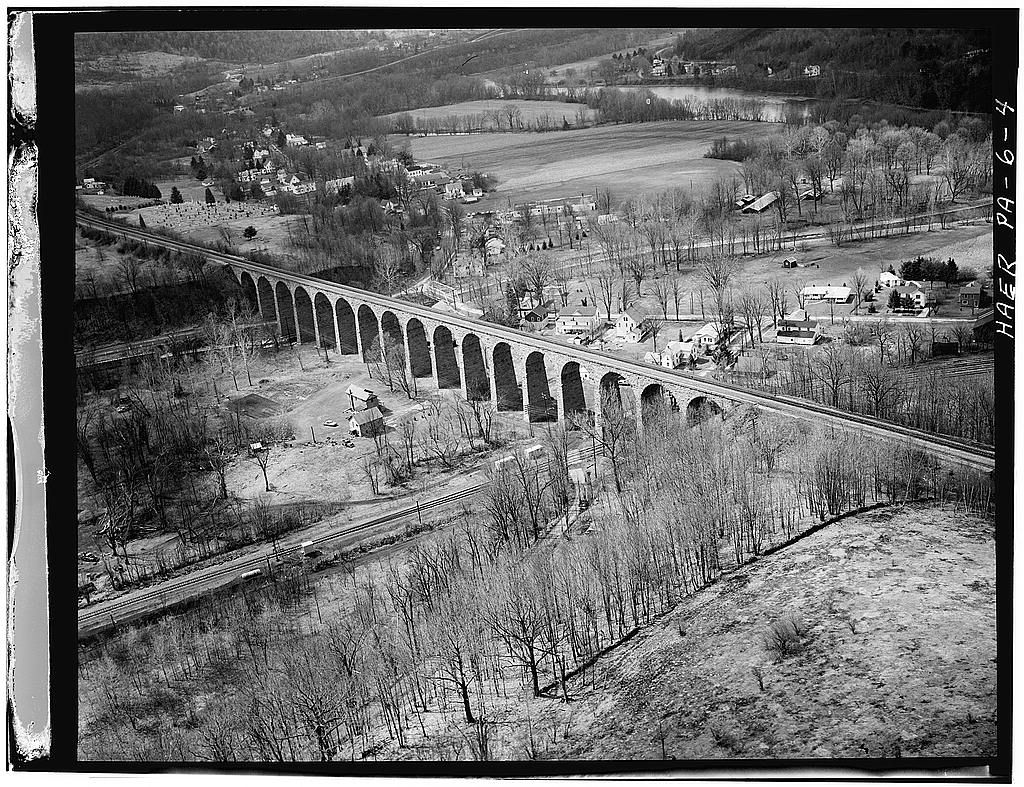About
Construction of the New York & Erie Railroad had been underway, off and on, for 14 years when it faced a compound problem in 1846. The railroad's charter from New York State required the road to be built as far as Binghamton by December 31, 1848. To get there, the track needed to traverse a deep valley a couple of miles south of the New York-Pennsylvania border. An embankment was considered but in an era before mechanized earth-moving equipment, it could not be built before the deadline. The engineering for wooden trestles was well known, as was their susceptibility to fire.
The Erie hired Julius W. Adams as superintending engineer. Adams had a distinguished career in civil engineering and over a decade of experience with railroads. He designed the Starrucca Viaduct with his brother-in-law, James P. Kirkwood, also an experienced railroad engineer. Asked if he was up to the job, Kirkwood reportedly replied, "I can build that viaduct on time, provided you don't care how much it would cost." (It cost around $320,000, then the most expensive railroad bridge, equivalent to more than $10 million in 2020.)
Thomas Heavy, an Irish immigrant who knew Kirkwood from other projects, was brought on as lead stone mason. Adams, Kirkwood, Heavy, and 800 laborers earning a dollar a day constructed the Starrucca Viaduct in one year. The structure, built using locally quarried bluestone, is 1,040 feet long, stands 100 feet above the creek at the deck, and has 17 arches, each 50 feet in diameter.
The Starrucca Viaduct was an immediate attraction. In 1851, President Millard Fillmore was on the inaugural run from Piermont, New York, on the lower Hudson River, to Dunkirk, on Lake Erie. The train stopped at the viaduct so passengers could disembark and admire it. Jasper Francis Cropsey painted Starrucca Viaduct, Pennsylvania in 1865, depicting a symbol of human progress introduced into a picturesque landscape.
Visitors today are unlikely to see a train. The modern-era New York, Susquehanna, and Western Railway, operating on track now owned by Norfolk Southern, runs six freight trains per week on the former Erie main line. The absence (mostly) of train traffic contributes to the experience of the Starrucca Viaduct. The stillness of the valley combines with the massive scale of the structure to create a sense of majesty. The viaduct is listed on the National Register of Historic Places and was designated a Historic Civil Engineering Landmark, a distinction given to very few bridges.
Related Tags
Know Before You Go
Parking is available at Luciana Park, where there is also informational panels, picnic tables and a view of the structure. Tannery Street passes beneath the Starrucca Viaduct.
Published
May 17, 2024


































